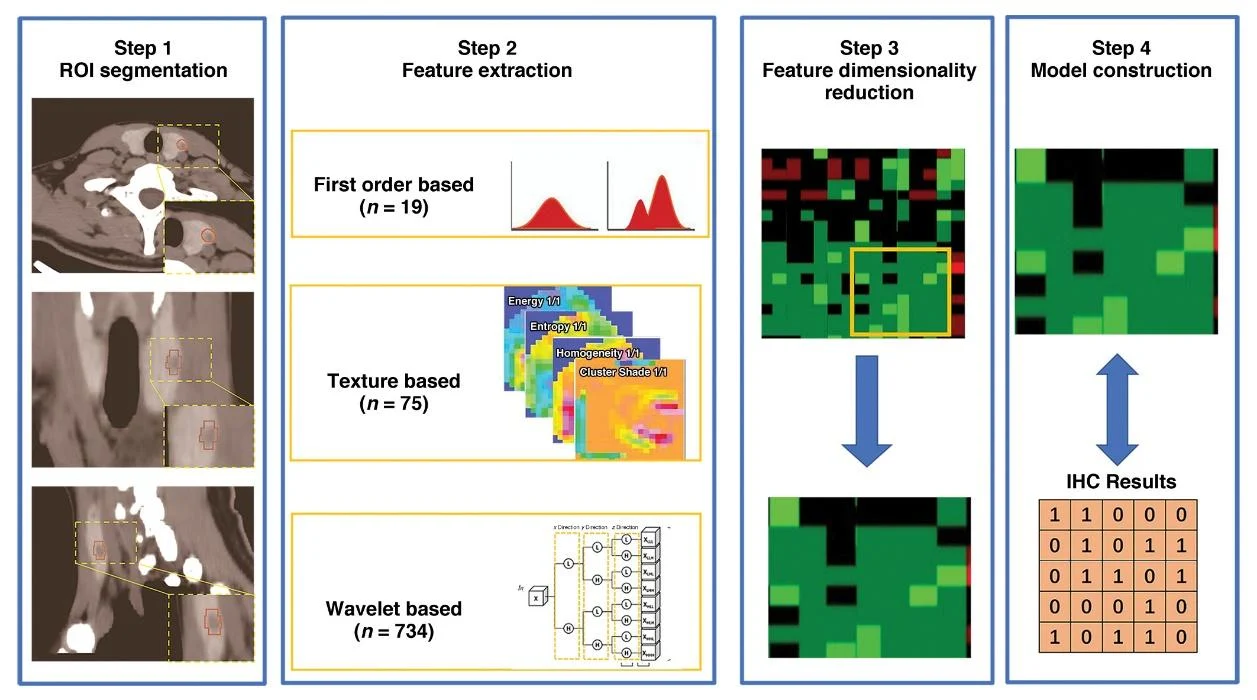Radiomics#
Radiomics is the high-throughput extraction of quantiative features from medical images for textural analysis that spatially characterises regions/volumes of interest and may provide insight into the underlying pathophysiology to support diagnosis, prognosis, and treatment planning (Barry et al., 2025). It bridges radiology and data science, allowing for a more detailed understanding of disease characteristics.

Radiomics analysis workflow (Source)
Learn the Foundations#
-
Intro to Python (CS50 Week 6)
Radiomics pipelines are often built in Python, so this course provides a solid foundation in the language. -
PyRadiomics Documentation
The official documentation for PyRadiomics, a robust open-source Python package for extracting engineered features from medical images. -
Deep Learning Specialization by Andrew Ng
A comprehensive course that covers the fundamentals of deep learning. Highly relevant for radiomics pipelines that involve neural networks for image feature extraction or outcome prediction. -
Lightning in 15 Minutes
A concise tutorial introducing PyTorch Lightning—an efficient and reproducible way to structure deep learning projects, especially useful for radiomics model development.
Key Papers and Case Studies#
-
Decoding tumour phenotype by noninvasive imaging using a quantitative radiomics approach — Nature Communications
This seminal paper is widely credited with sparking interest in radiomics by demonstrating how quantitative imaging features can decode tumor phenotype. -
Radiomics strategies for risk assessment of tumour failure in head-and-neck cancer — Scientific Reports
A strong example of using engineered radiomic features to predict treatment outcomes in head-and-neck cancer. -
Deep learning for lung cancer prognostication: A retrospective multi-cohort radiomics study — PLOS Medicine
Combines radiomics with deep learning to predict survival outcomes, showcasing the power of hybrid approaches. -
Artificial intelligence in radiology — Nature Reviews Cancer
A high-level overview of AI’s role in modern radiology, including how radiomics fits into the broader clinical and research landscape.